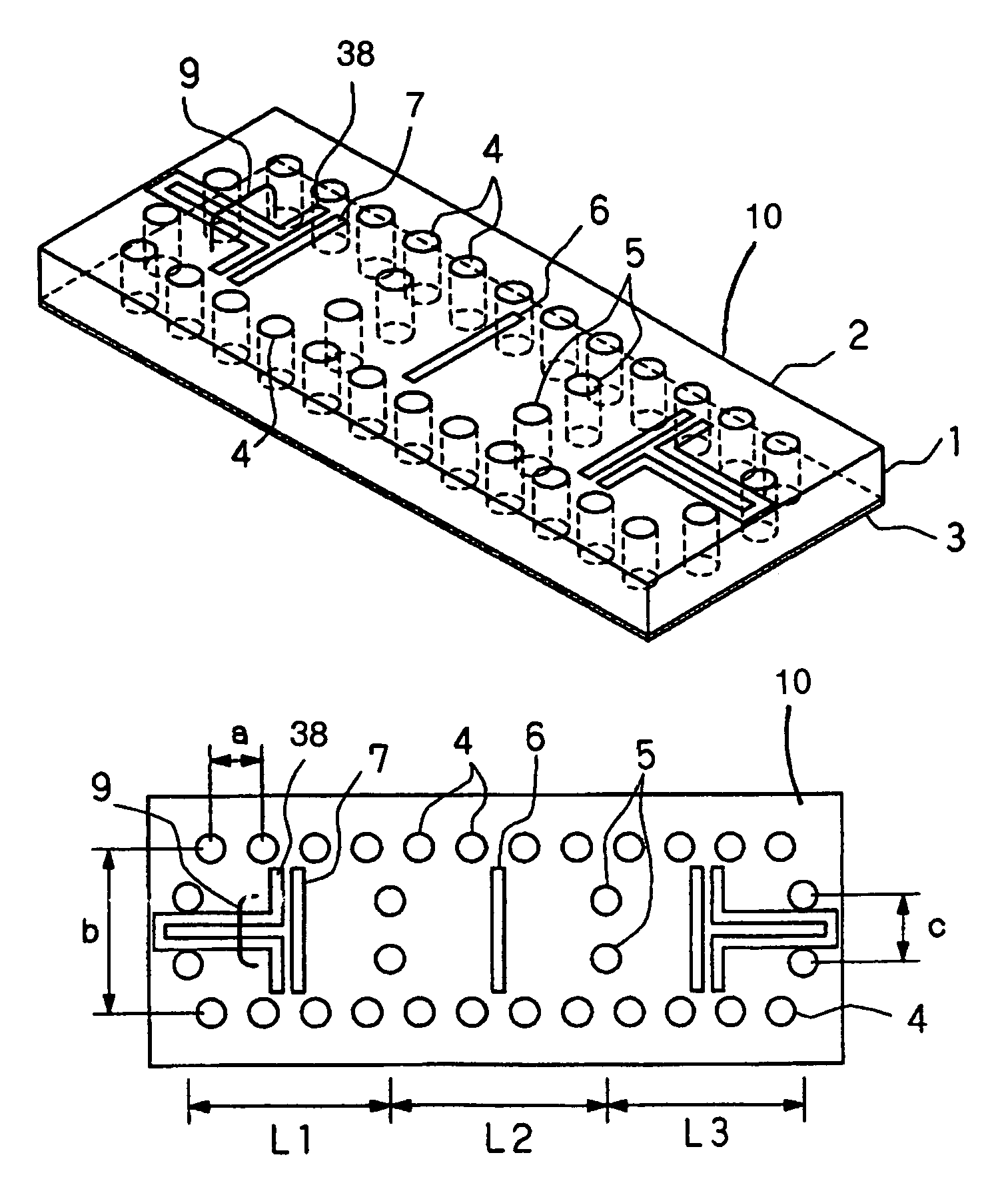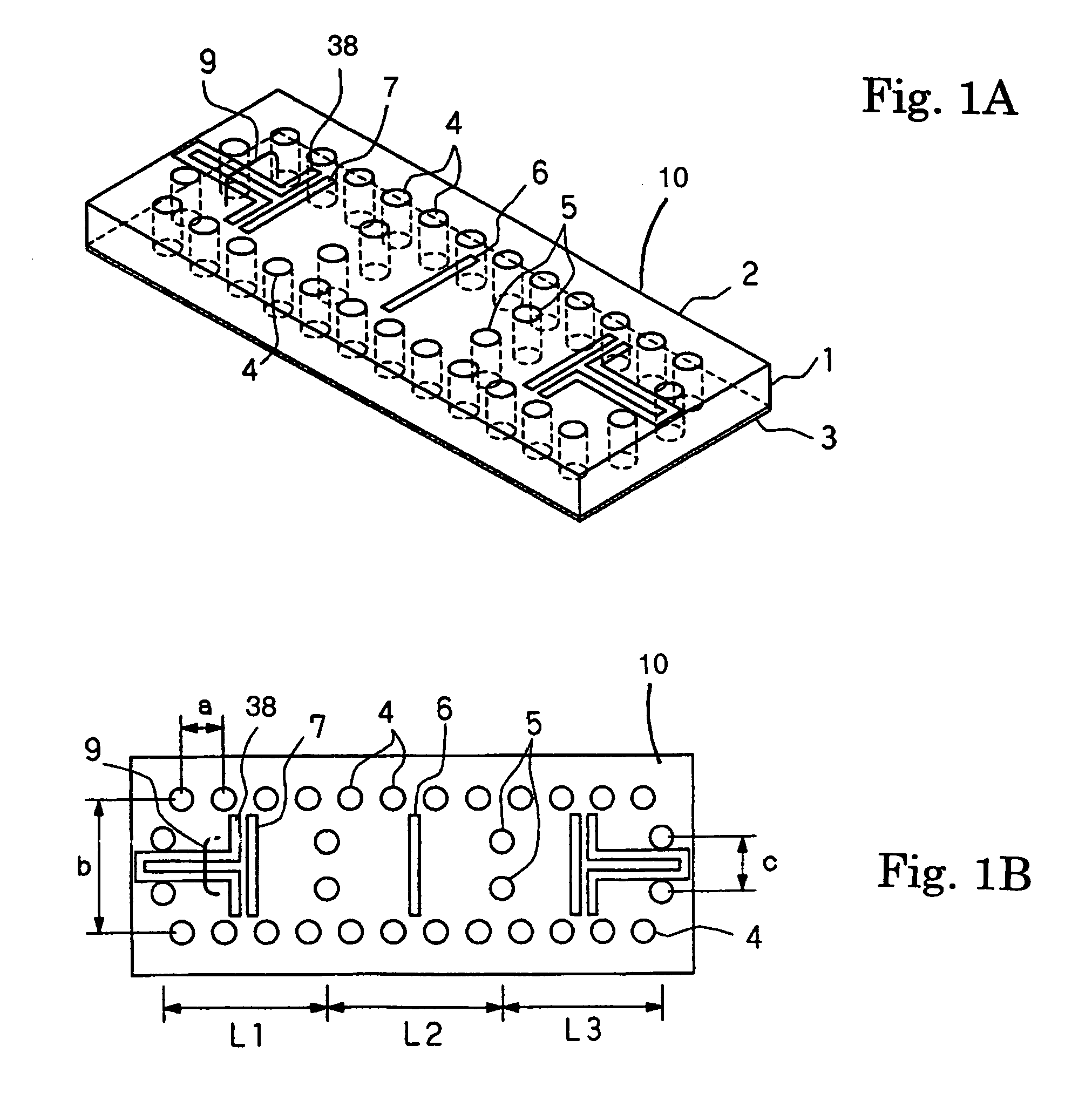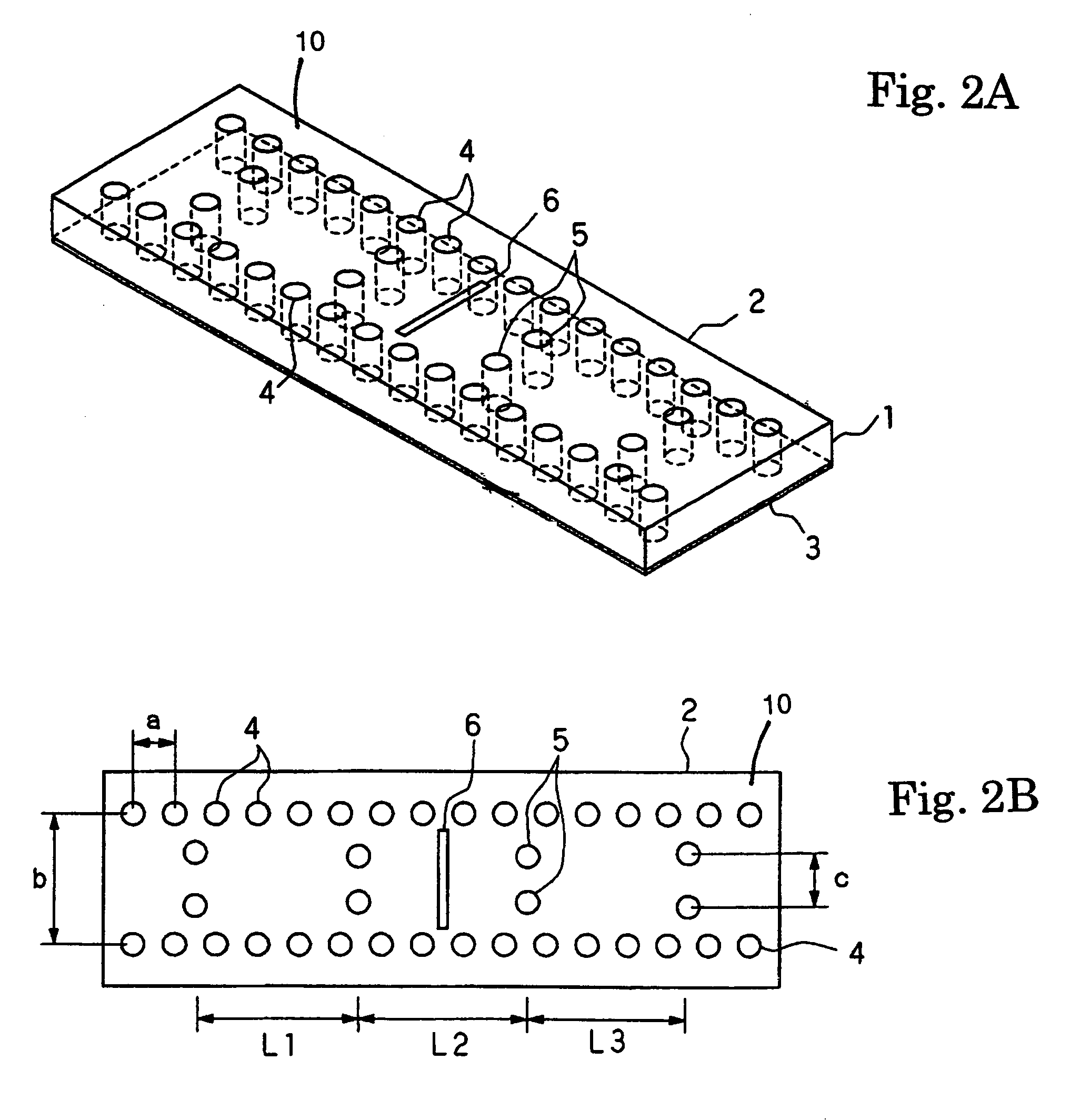Dielectric waveguide filter with inductive windows and coplanar line coupling
a filter and dielectric waveguide technology, applied in waveguides, instruments, resonators, etc., can solve the problems of difficult connection of the filter to a planar circuit and the drawback of the filter type in larger dimensions, and achieve excellent filter characteristics
- Summary
- Abstract
- Description
- Claims
- Application Information
AI Technical Summary
Benefits of technology
Problems solved by technology
Method used
Image
Examples
first embodiment
[0033]Hereinafter, the present invention is more specifically described based on the preferred embodiments thereof with reference to the drawings. Like reference labels in different drawing figures refer to the same feature and may be described in detail for all drawing figures. Referring to FIGS. 2A and 2B, there is shown the schematic structure of a filter 10 according to the present invention. FIGS. 2A and 2B show the schematic structure of a filter 10 having a three-stage configuration. FIG. 2A is a perspective view thereof, whereas FIG. 2B is a top plan view thereof. A dielectric substrate 1 is provided with a pair of longer-side conductor planes, relative to the rectangular waveguide filter cross-section, a top conductor 2 formed on a surface thereof, and a bottom conductor 3 formed on the opposing surface thereof. Via-holes 4 connecting together the top conductor 2 and the bottom conductor 3 are formed in two rows parallel to a signal transfer direction. The spacing “a” (FIG....
second embodiment
[0039]Referring to FIGS. 4A and 4B, there is shown the schematic structure of a filter 10 according to the present invention. FIGS. 4A and 4B show the schematic structure of a filter 10 having a four-stage configuration. FIG. 4A is a perspective view thereof, whereas FIG. 4B is a top plan view thereof. A dielectric substrate 1 is provided with a top conductor 2 formed on one surface thereof, and a bottom conductor 3 formed on the opposite surface thereof. Via-holes 4 connecting the top conductor 2 and the bottom conductor 3 (FIG. 4A) together are formed in two rows along the signal transfer direction. Side conductor planes 20 and 30 are not shown, but are present as in FIG. 2A. It is preferable that the spacing “a” (FIG. 4B) between adjacent via-holes be equal to or less than ½ of the in-tube wavelength. This structure can be construed as a pseudo waveguide tube having a waveguide-tube cross section defined by the thickness of the dielectric and the spacing “b” (FIG. 4B) between the...
fourth embodiment
[0043]Referring to FIGS. 1A and 1B, there is shown the schematic structure of a filter 10 according to the present invention. FIGS. 1A and 1B show the schematic structure of a filter 10 having a three-stage configuration. FIG. 1A is a perspective view thereof, whereas FIG. 1B is a top plan view thereof. This embodiment best exhibits the features of the present invention. A dielectric substrate 1 (FIG. 1A) is provided with a top conductor 2 formed on one surface thereof, and a bottom conductor 3 formed on the opposite surface thereof. Via-holes 4 connecting together the top conductor 2 and the bottom conductor 3 are formed in two rows along the signal transfer direction. The spacing “a” (FIG. 1B) between adjacent via-holes is preferably equal to or smaller than ½ of the in-tube wavelength. This structure is construed as a pseudo waveguide tube having a waveguide-tube cross section defined by the thickness of the dielectric and the spacing “b” (FIG. 1B) between the via-holes 4 arrange...
PUM
 Login to View More
Login to View More Abstract
Description
Claims
Application Information
 Login to View More
Login to View More - R&D
- Intellectual Property
- Life Sciences
- Materials
- Tech Scout
- Unparalleled Data Quality
- Higher Quality Content
- 60% Fewer Hallucinations
Browse by: Latest US Patents, China's latest patents, Technical Efficacy Thesaurus, Application Domain, Technology Topic, Popular Technical Reports.
© 2025 PatSnap. All rights reserved.Legal|Privacy policy|Modern Slavery Act Transparency Statement|Sitemap|About US| Contact US: help@patsnap.com



